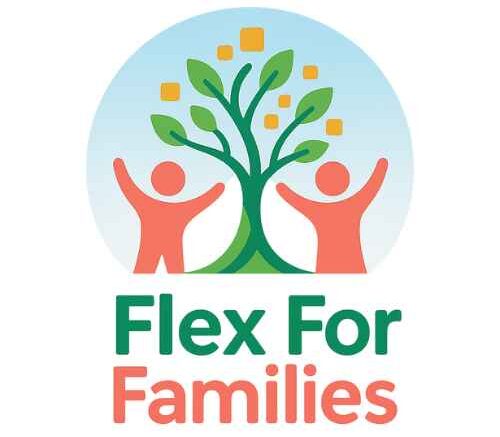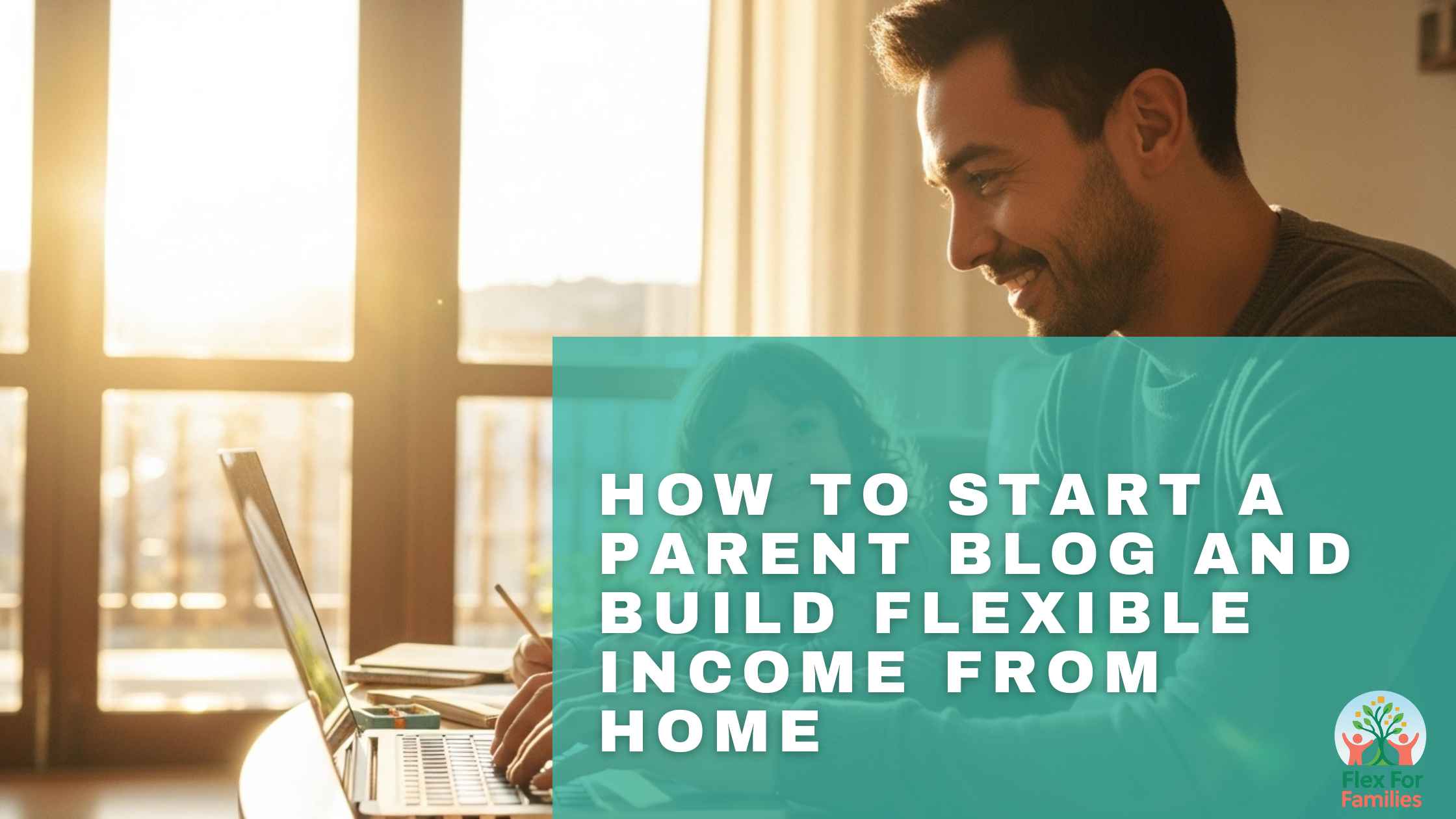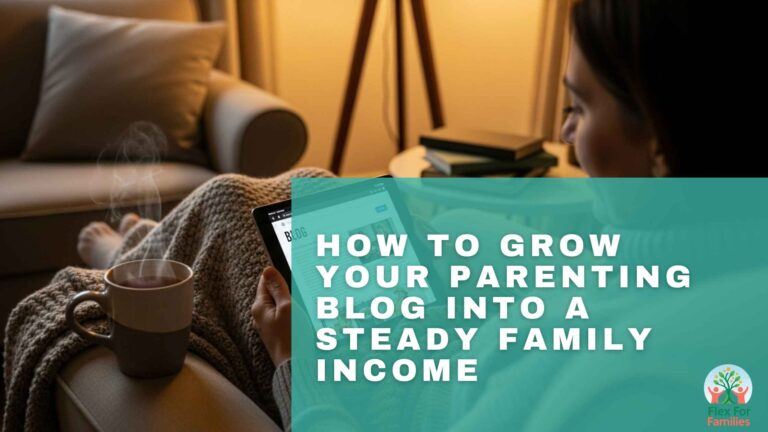Real flexibility for parents starts at home, but getting there can feel impossible when you’re racing between snacks, school runs, and that mountain of laundry. I remember typing out a blog post during nap time, one hand on the keyboard, the other wiping up spilt crackers. That’s definitely not the picture-perfect workspace you’ll find on Instagram, but it’s real.
If the idea of earning income while still being there for your family sounds good, you’re in the right place. I’m breaking down how to start a parent blog from scratch, even if you’re not a tech wizard, and how to grow it into a steady, flexible income you can actually count on.
If all of this sounds familiar, you don’t have to figure it out alone. There’s a space built for parents doing exactly this.
Every parent blog starts somewhere. Here’s your roadmap through the Parent Blogging Success series — from your first post to building income that fits your family.
Why Parent Blogging Works for Real Families
Blogging can be a handy way for parents to create a flexible income that works around your family’s schedule, not the other way around. You decide when you work, what you write about, and how much time you put into it. There’s no commute and no boss breathing down your neck. It becomes your own little corner of the internet where you call the shots.

The best part is you don’t need a giant budget to get started. Most parents who begin blogging are working with free tools and hosting that can cost less than a pizza each month. Blogging also gives you a way to connect with other parents on a real level, sharing the stuff that actually matters… even when it’s messy and unfiltered.
Parent blogging isn’t about chasing trending topics or getting wrapped up in comparison games. It works best when you focus on your own experiences and offer support to other parents. That genuine connection is what makes a parent blog helpful and memorable for both you and your readers.
On top of the flexibility, you can stumble upon friendships, partnerships, and opportunities you never expected. Many parent bloggers find themselves supporting charities, running workshops, or starting side businesses, all thanks to their blogs.
If you’d like to see why blogging fits so naturally into family life, this post breaks down the biggest reasons parents love the flexibility it brings – and how it can work for you too.
Step 1: Choose Your Parenting Blog Niche
Picking a niche is just deciding what you want your blog to focus on. Getting clear on this early gives you a sense of direction, so you’re not scrambling to write about every parenting topic that pops up. Plus, it helps the right readers track you down, making your blog experience less overwhelming and more rewarding.

The options are endless. You could focus on parenting through a special needs perspective, frugal family living, eco-friendly habits with kids, homeschooling adventures, gentle parenting, or raising kids in multicultural families. If you care about it, chances are other parents do too… So don’t worry about picking something “mainstream.”
If you’re stuck choosing one topic, here’s a simple trick: List three things you always help other parents with. That’s a good place to start finding your unique voice.
Try researching blogs you admire to see what kind of niches click with you. You can also check out online parent forums, Facebook groups, or Pinterest to spot areas where there’s a need for real advice. The right niche is one where your story matches what other parents are facing, even if it’s specific or quirky.
Once you’ve got a few ideas for your niche, dive into this guide where I share real examples and tips to help you find your unique voice and attract readers who truly connect with your story.
Step 2: Pick a Blog Name and Platform
Choosing a name might feel big, but don’t let it hold you back. Aim for a name that gives people a sense of what you’re about, is easy to remember, and matches your family’s style. Some bloggers use a favourite parenting phrase, a family nickname, or even a running joke as inspiration.

For your blogging platform, I recommend WordPress.org. It’s flexible and gives you plenty of room to grow. For hosting, Bluehost keeps costs low and makes getting started as smooth as possible. Their customer support is helpful if you hit a snag, too. (For a full setup guide, check out my Bluehost review.)
Tip: Don’t overthink it. The name and design don’t have to be perfect; you can always adjust them as you go. Getting started is more important than agonising over details!
Step 3: Design Your Blog Simply
You don’t need a fancy designer. Start with a clean, mobile-friendly theme like Blocksy or GeneratePress. These are easy to use and keep your site looking modern from day one. Choose big fonts, soft colours, and a simple menu to make it easy for readers to get around.

For visuals, I rely on Canva because it makes graphics straightforward. Even if you don’t see yourself as artistic. Stick with one colour palette and style of font across your site. This creates a calm, unified look that feels like home, not a chaotic mishmash.
After you get comfortable, you can always experiment with new layouts or branding. But starting simple keeps things stress-free and reader-friendly.
When you’re ready to make blogging smoother, these tools can help you design faster, stay organised, and keep your blog running without stress.
Step 4: Write Content That Helps and Connects
Your writing doesn’t have to be polished or perfect. What matters is that it helps your audience. The best blog posts often read like advice you’d give to a friend over coffee. Stay honest and focus on sharing your real challenges and wins, no matter how small.
Great content ideas include quick parenting hacks, routines that save your sanity, honest reviews of products, stories you wish someone told you before you had kids, or simply a window into your everyday life. Readers love content that’s both useful and relatable.

I suggest mixing evergreen posts (helpful any time) with seasonal posts, like back-to-school tips or holiday survival guides. That way, your blog keeps drawing visitors year-round, while seasonal traffic gives you a nice lift at key moments.
Don’t be afraid to share tough moments or things that didn’t go as planned… It’s those stories that make your blog trustworthy and memorable.
Once you’ve written a few posts, the next challenge is staying consistent. That’s where having support makes all the difference.
Step 5: Share Your Blog With the Right People
Building an audience takes time, but it starts where parents already hang out. Pinterest is a goldmine for parenting tips, routines, and crafts. Facebook and online communities help you connect and get feedback fast.
It’s best to choose just one or two platforms, so you don’t get overwhelmed or stretched too thin.

Start your email list as soon as possible! ConvertKit (Kit) is my go-to, especially for beginners. Even a handful of subscribers can jumpstart your sense of community. Email lets you reach readers directly, without having to keep up with ever-changing social media algorithms.
Consistency Tip: Instead of trying to do everything, focus on one small blogging task per day. It could be sharing your latest post, replying to a comment, or brainstorming your next topic. This daily rhythm adds momentum.
Networking with other bloggers is helpful, too. Leave comments on their posts, join group boards, and don’t be shy about reaching out. You might stumble upon collaborations or joint projects that grow your blog quickly.
To get more eyes on your blog, start with simple SEO habits. This guide walks you through easy ways to help parents find your posts on Google without spending hours on tech.
Step 6: Monetise Your Blog the Family-Friendly Way
Once you have a few readers who check in regularly, it’s time to find ways to earn. Stay honest about your recommendations and stick with options that fit your values. Affiliate marketing (recommending products and earning a commission), digital downloads (like planners, printable checklists, or ebooks), and sponsored posts are the most family-friendly starting points.

Begin with simple programs like Amazon Associates, Canva’s affiliate program, or Tailwind. As your audience grows, you can experiment with creating your own products. Maybe an online workshop, course, or personalised advice session for new parents. These are great for adding some variety and boosting your income.
Remember, there aren’t any magic tricks or fast cash schemes. Earning real income from blogging is all about consistency and building trust, not bombarding people with ads or pop-ups.
When you’re ready to earn from your blog, these affiliate programs are beginner-friendly, ethical, and perfect for family-focused content.
If you want detailed help mapping out your blog and income plan, the Parent Blogging Hub is open to new members. I’ll guide you through each step, with real examples and support.
Step 7: Balance Blogging and Family Life
If you treat your blog like a never-ending to-do list, it can take over everything. That’s why boundaries matter.
Try batching similar blog tasks together – like writing two or three posts in one sitting – or planning out your next week of topics during a quiet evening. Set “blog hours” and stick to them, so you’re not always “on.” Let your family know your routine, so expectations stay realistic.

Family always comes first. Most readers understand and appreciate when bloggers are honest about taking breaks or slowing down. Consistency can be as simple as one post a week. What matters is building a routine you can stick to, even when life gets wild.
If you ever feel like you’re short on time, these simple habits will help you stay consistent without letting your blog take over family life.
Common Questions (FAQ)
How long does it take to start earning?
Most parent blogs take a few months to start seeing real traction. With steady effort and genuinely helpful content, you can speed up the process and build your confidence along the way.
Do I need tech skills?
Not at all! WordPress, Canva, and ConvertKit are all designed to be user-friendly and beginner-focused. If you hit a snag, there are tons of free tutorials and active forums online where you can ask for advice and quick fixes.
What if I don’t have much time?
Even 15 to 30 minutes a day is enough. Blogging works best when you fit it into your life, not when you remodel your world to fit blogging. Small steps lead to progress over time.
What if I run out of ideas?
Start with stories from your daily life, seasonal challenges, parenting wins (big or small), and mistakes you’ve made along the way. Questions from friends, your kids’ milestones, or things that make your day easier are great topics too. Somebody else is going through the same thing and could use your tips.
Small Steps Lead to Big Change
Starting a parent blog is not about chasing perfection from the get-go. It’s really about showing up, sharing what you know, and choosing progress over perfection every day.
 Whether you’re still brainstorming your blog name or sitting down to write your tenth post, every little step moves you forward. If you want to connect or chat about how your blogging ride is going, leave a comment below… I’d love to hear your story!
Whether you’re still brainstorming your blog name or sitting down to write your tenth post, every little step moves you forward. If you want to connect or chat about how your blogging ride is going, leave a comment below… I’d love to hear your story!
If you’re ready to take your blog from idea to steady progress, there’s a community waiting to help you do it step by step.
Let’s Chat
What’s one thing holding you back from starting your parent blog? Or, if you’re already rolling, what’s your next big goal? Drop a comment… I answer everyone!




